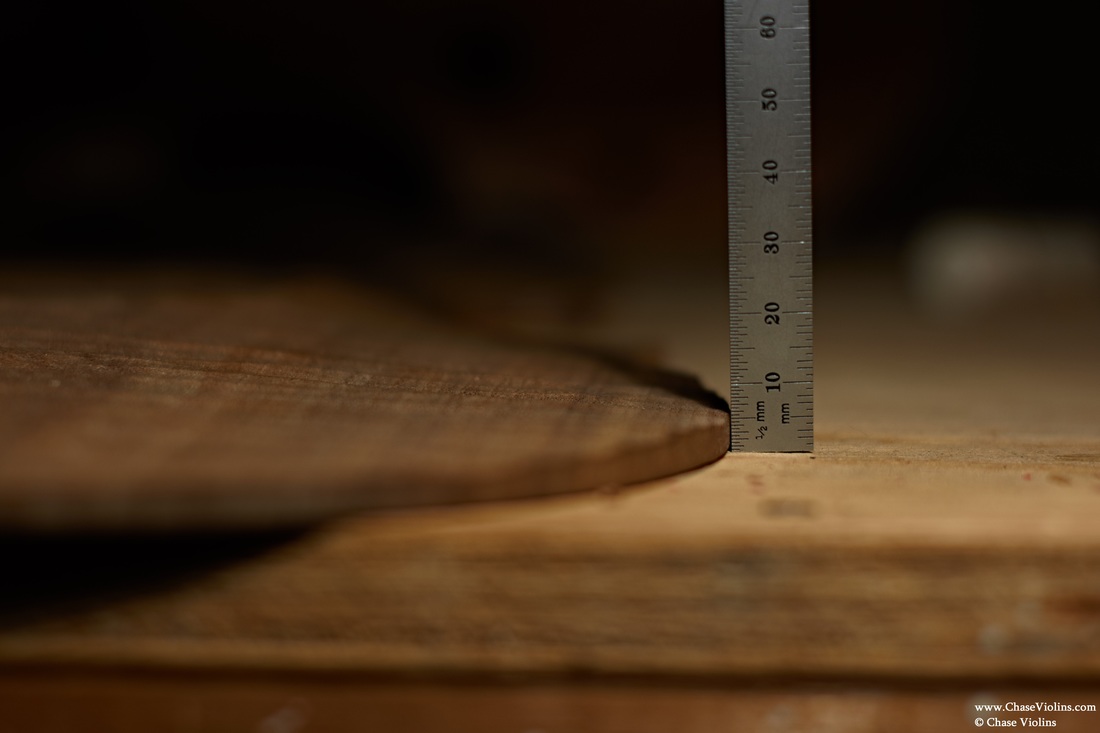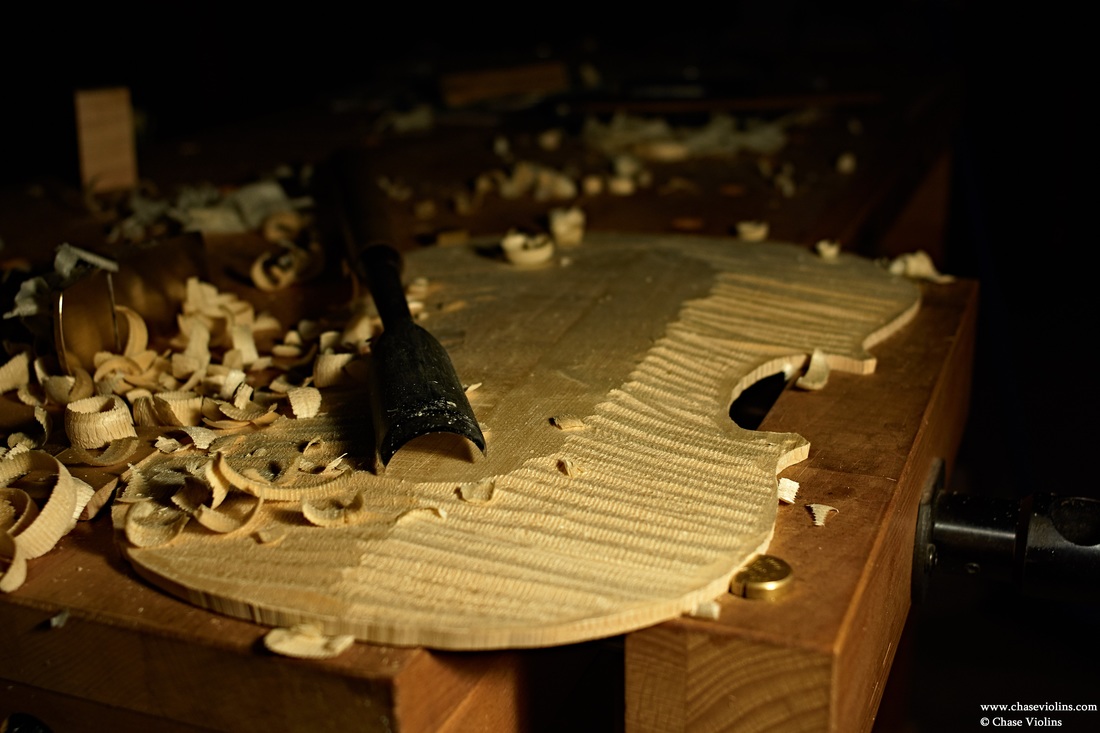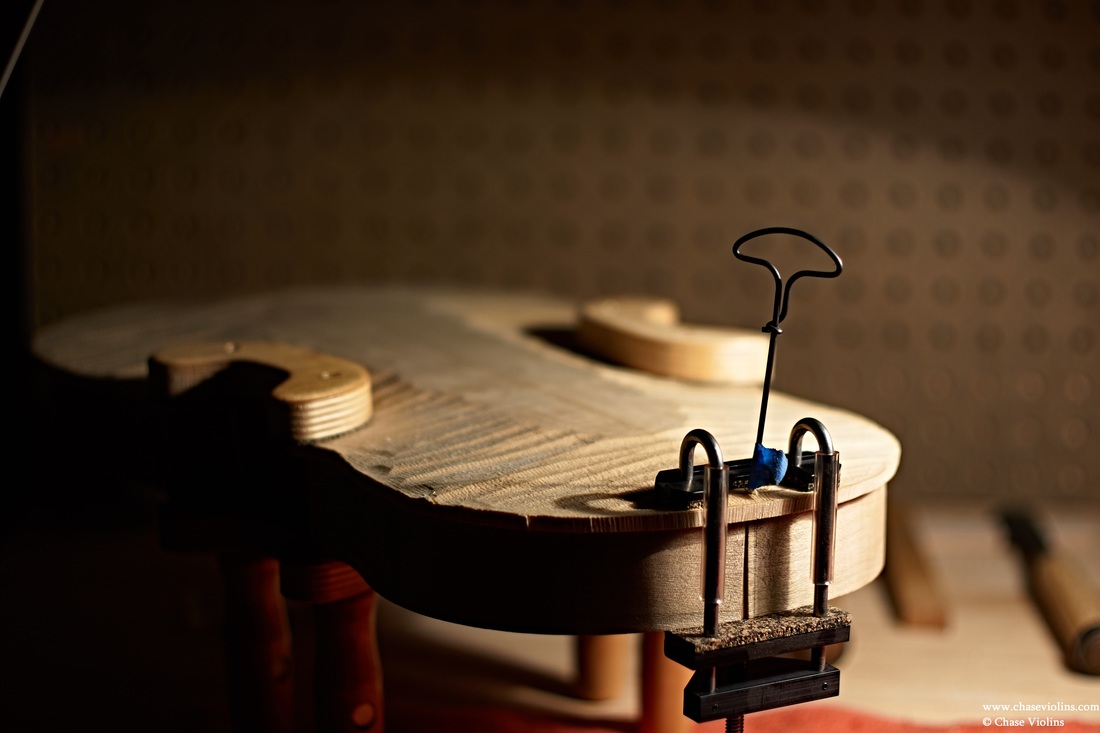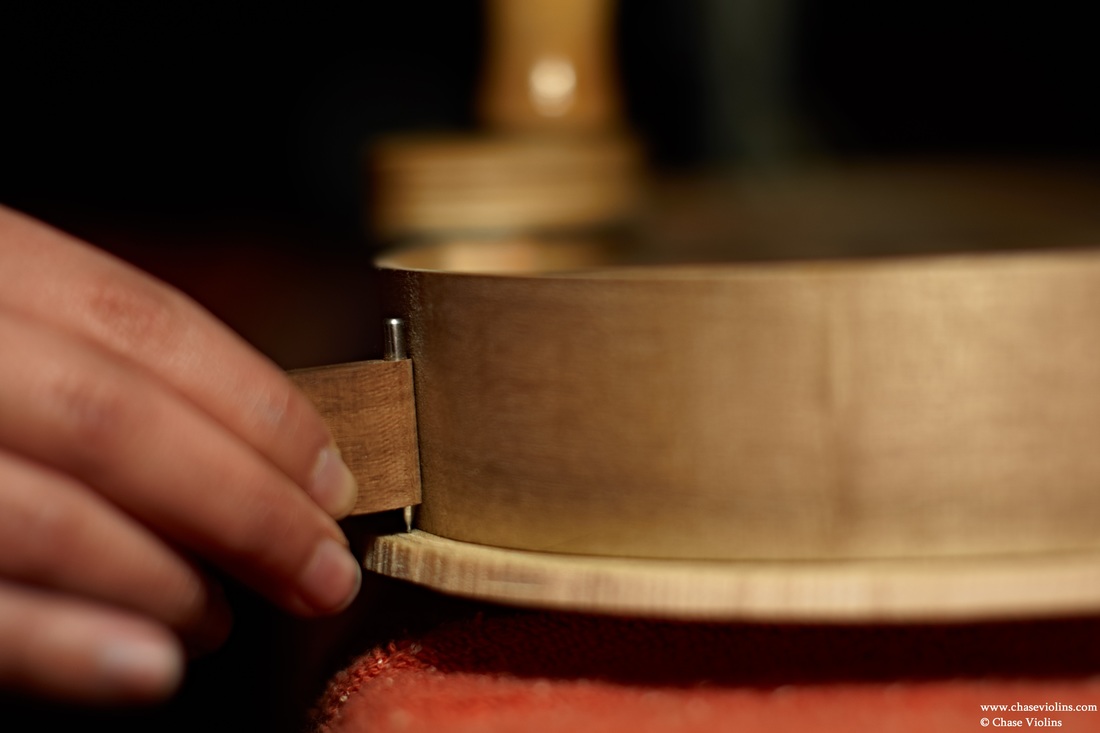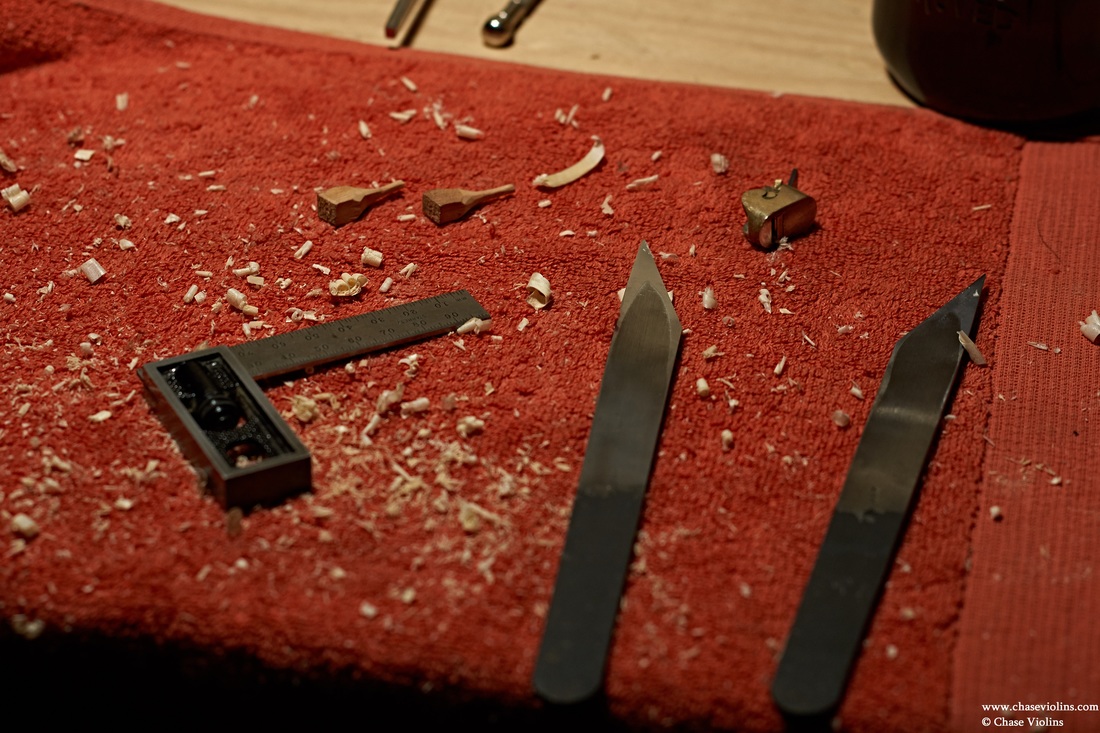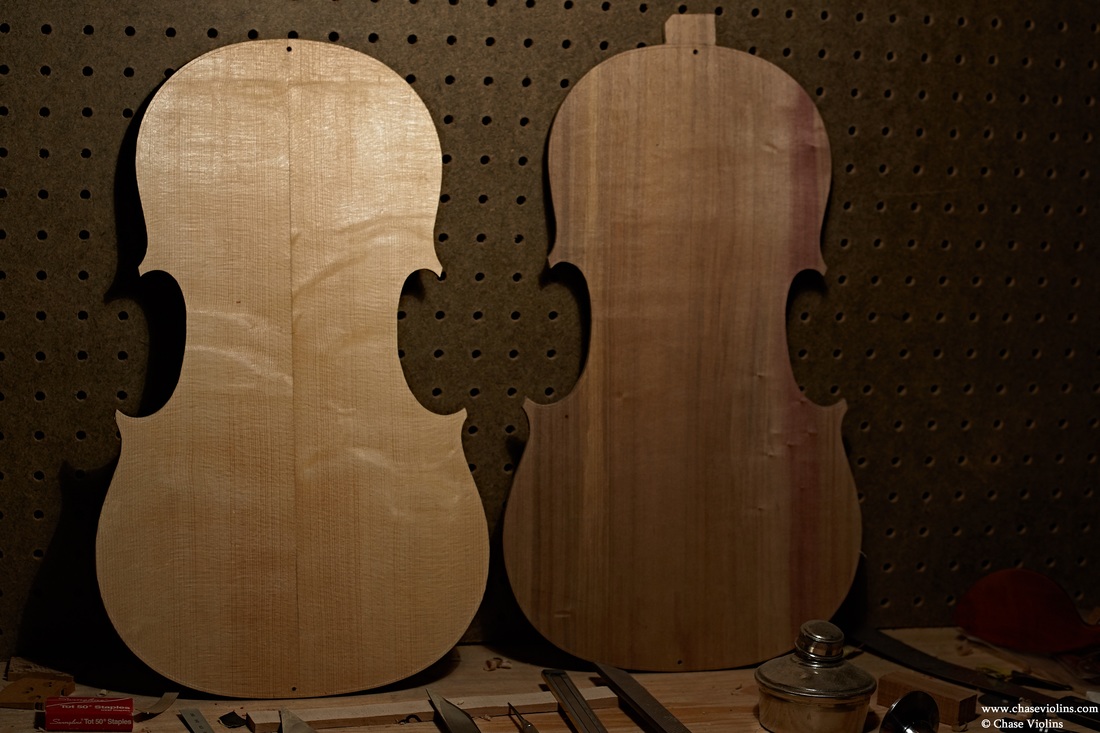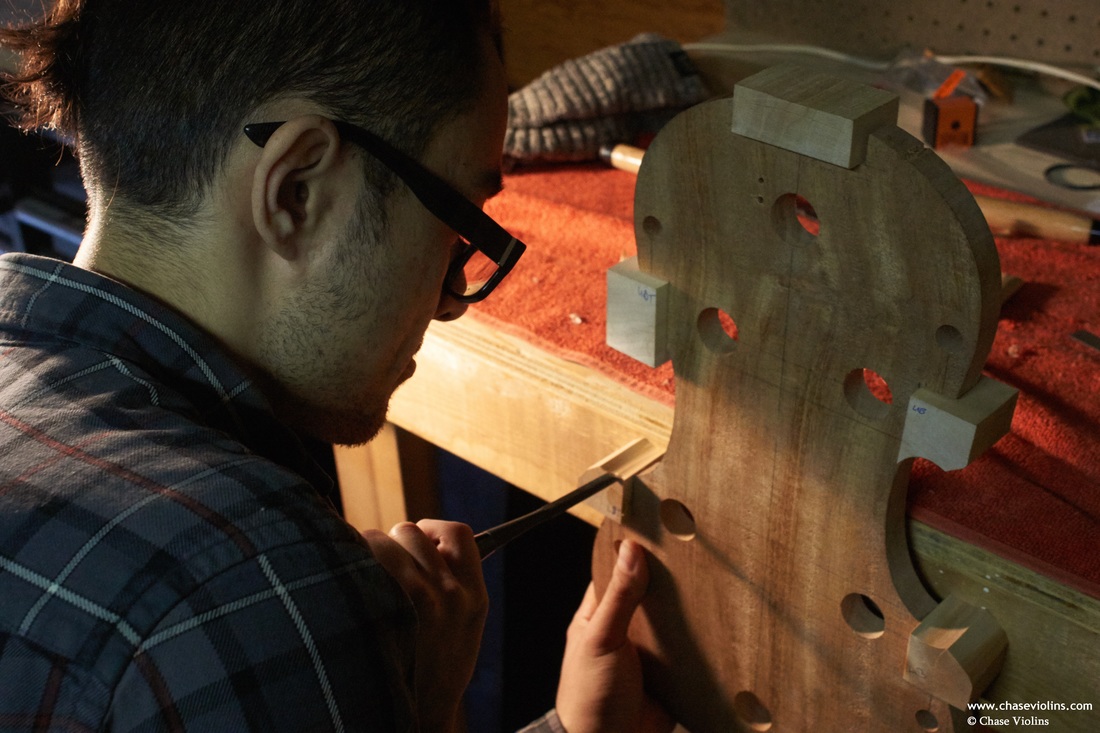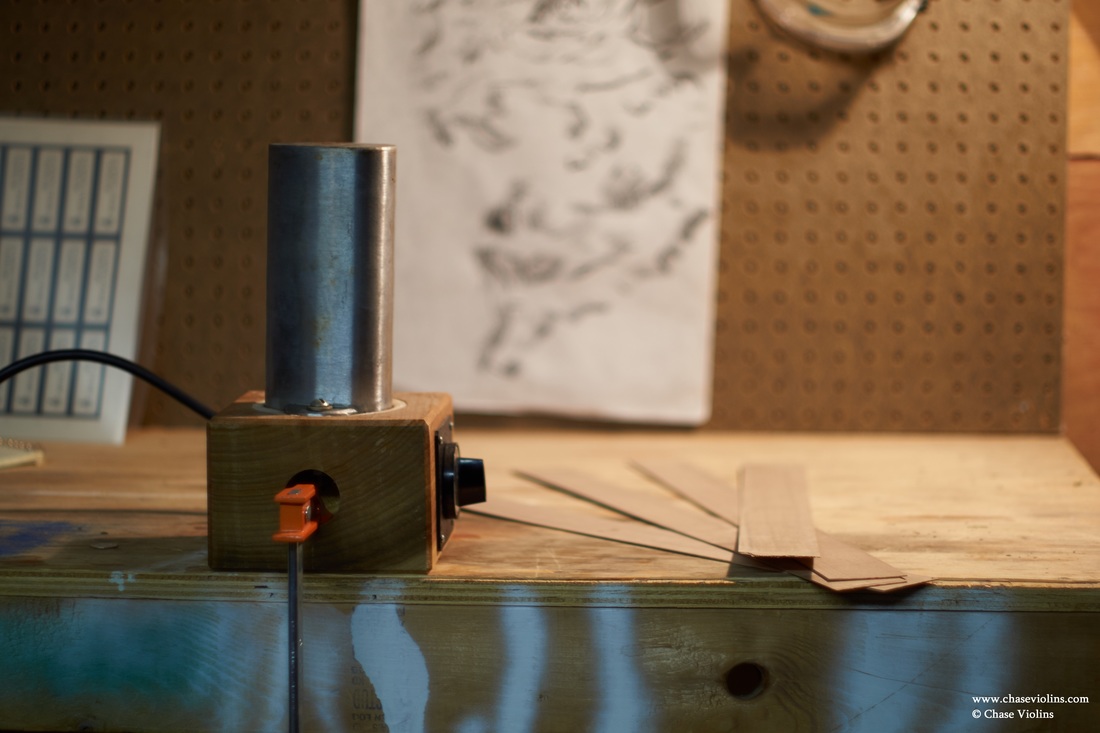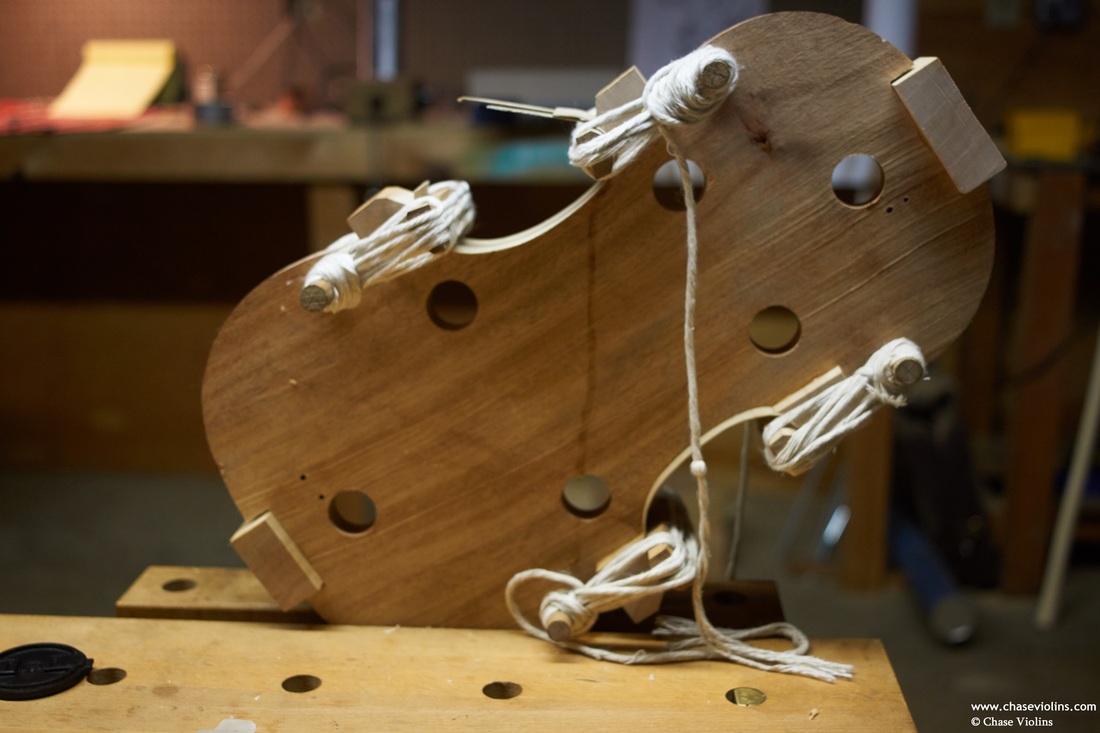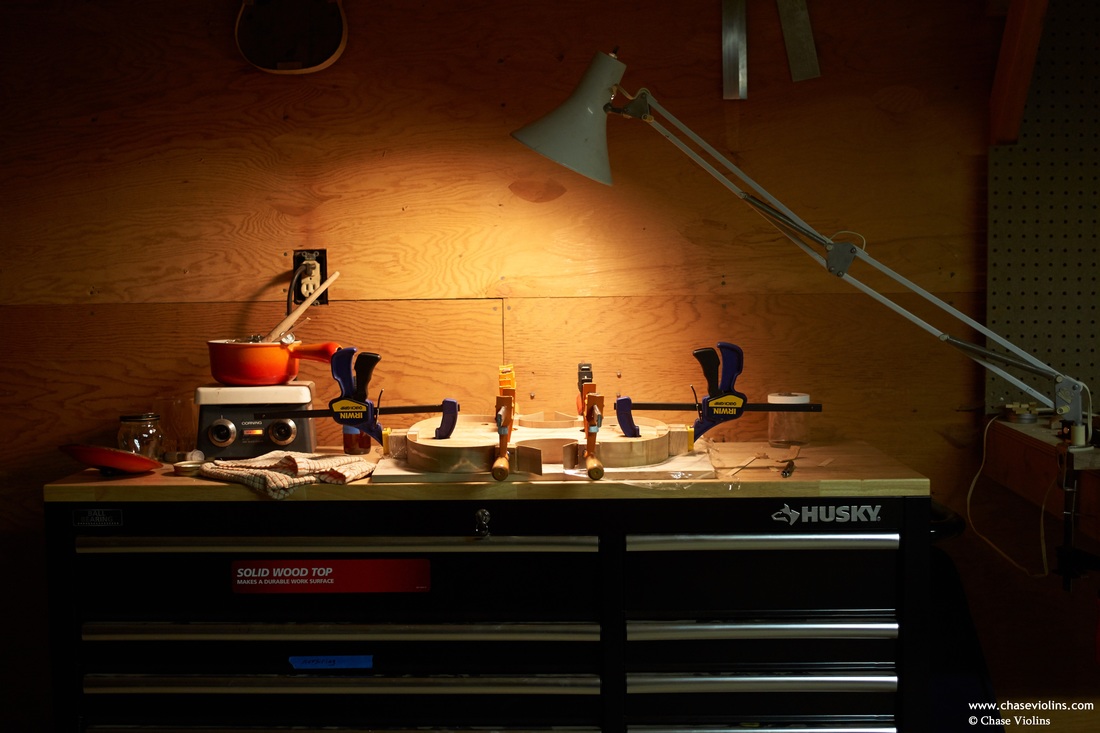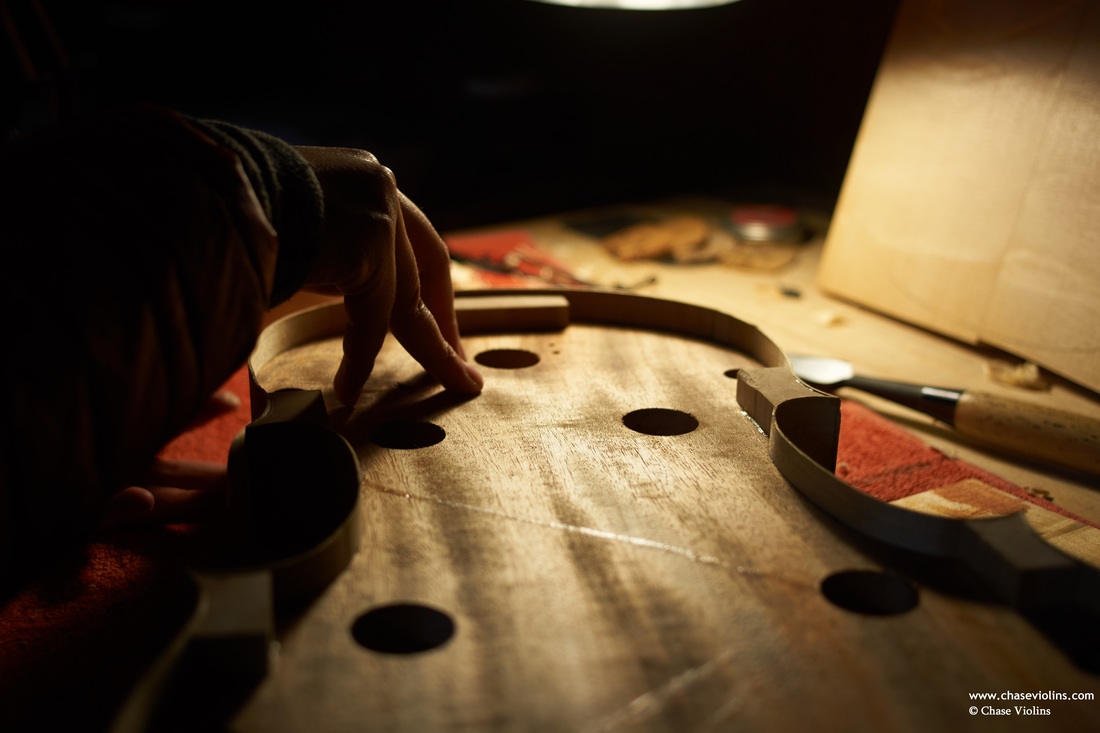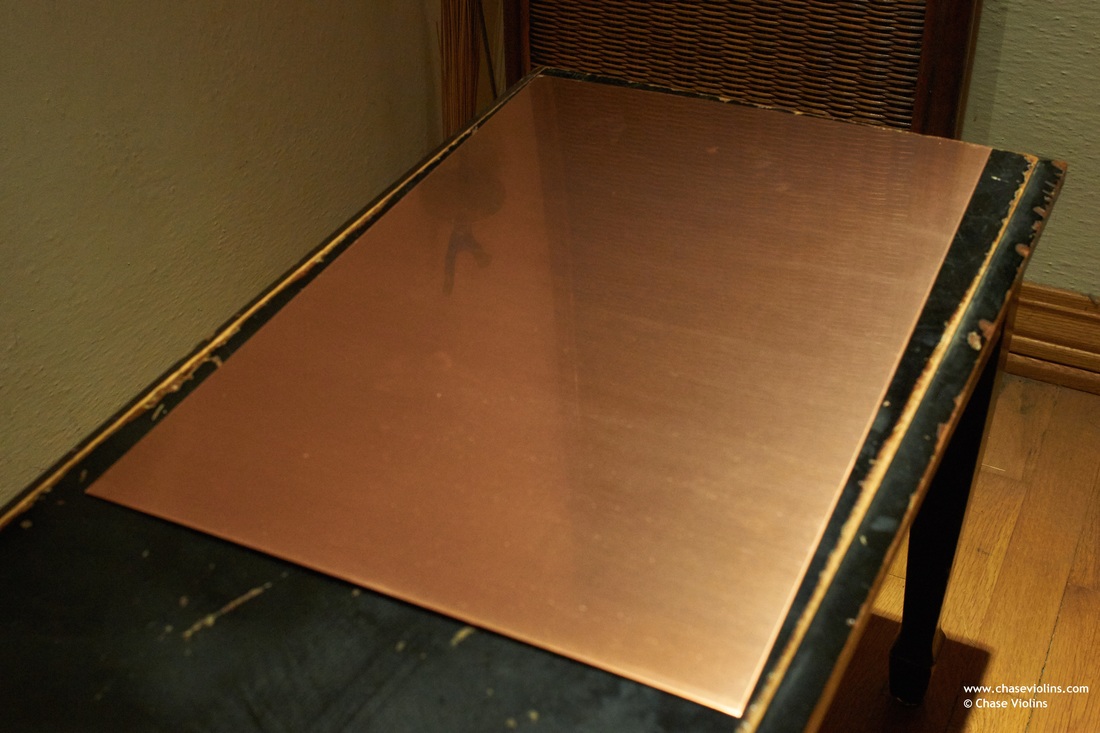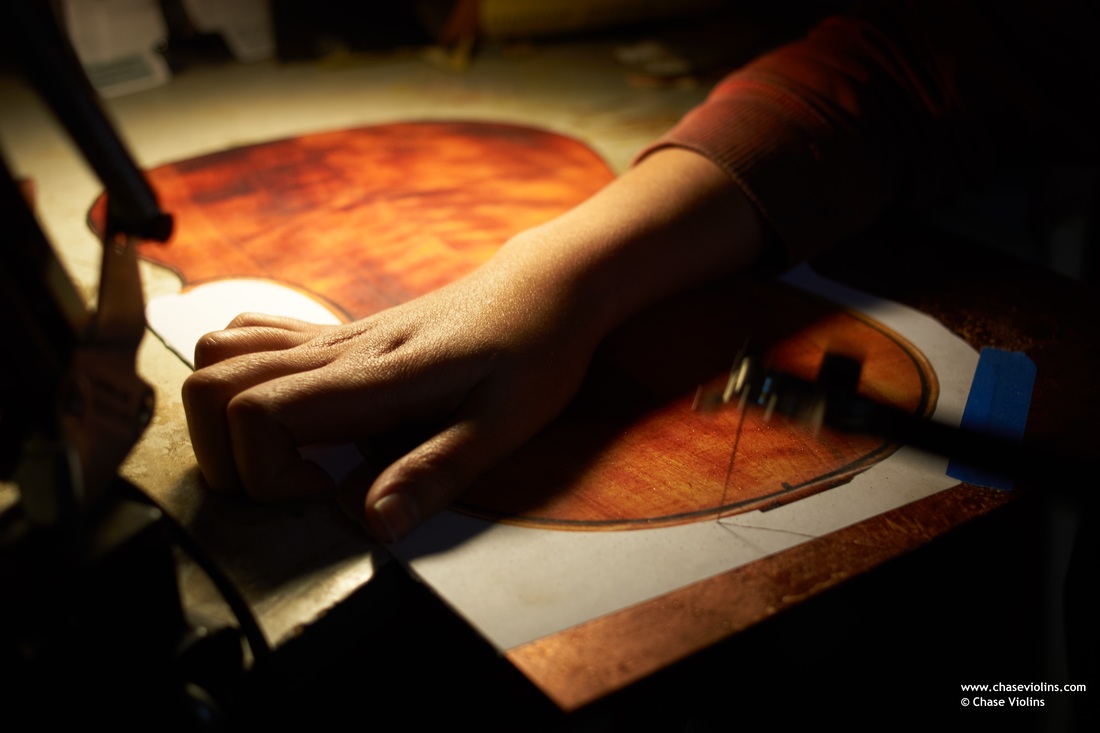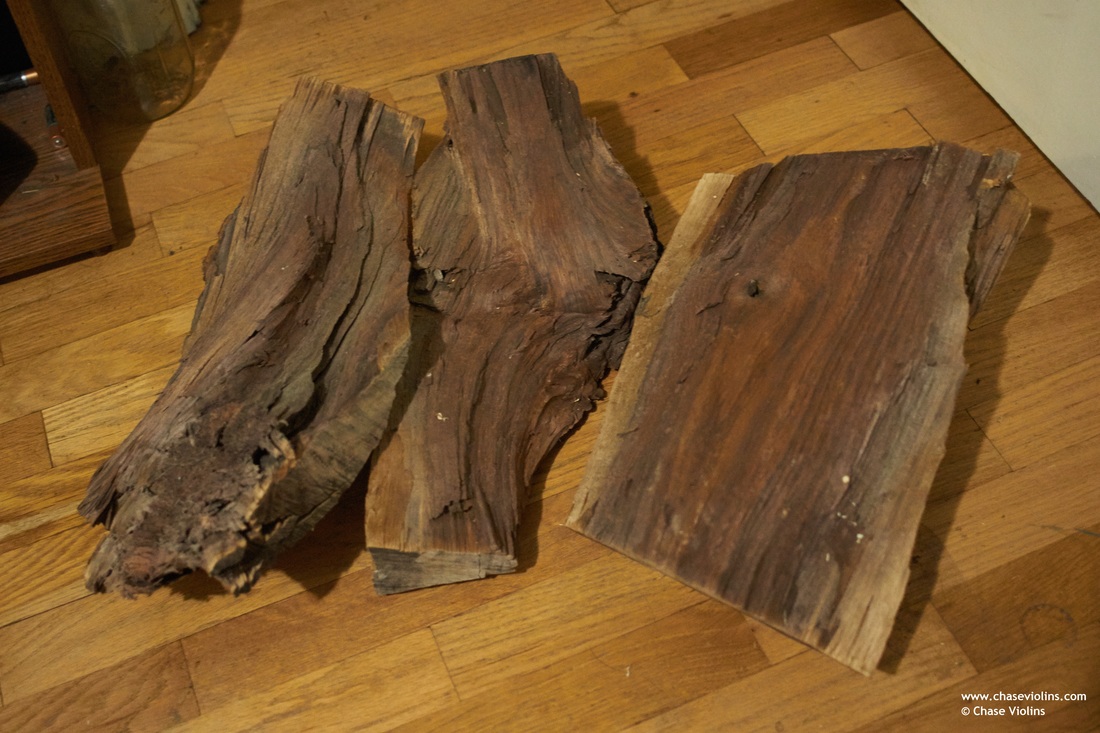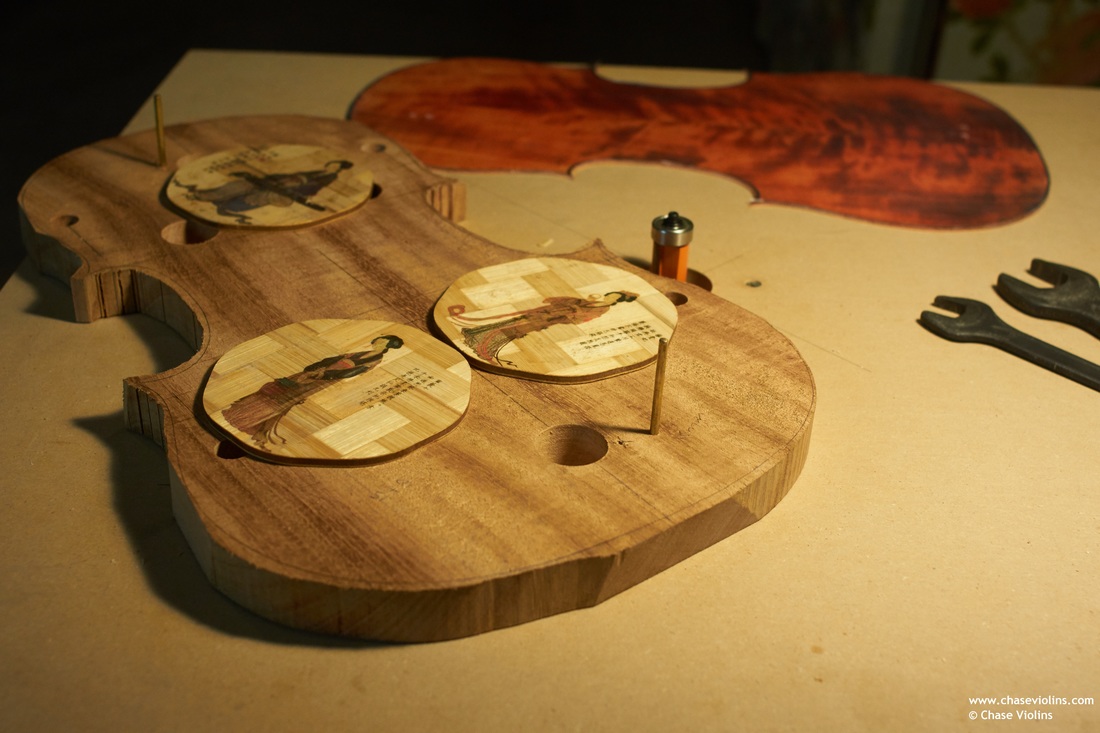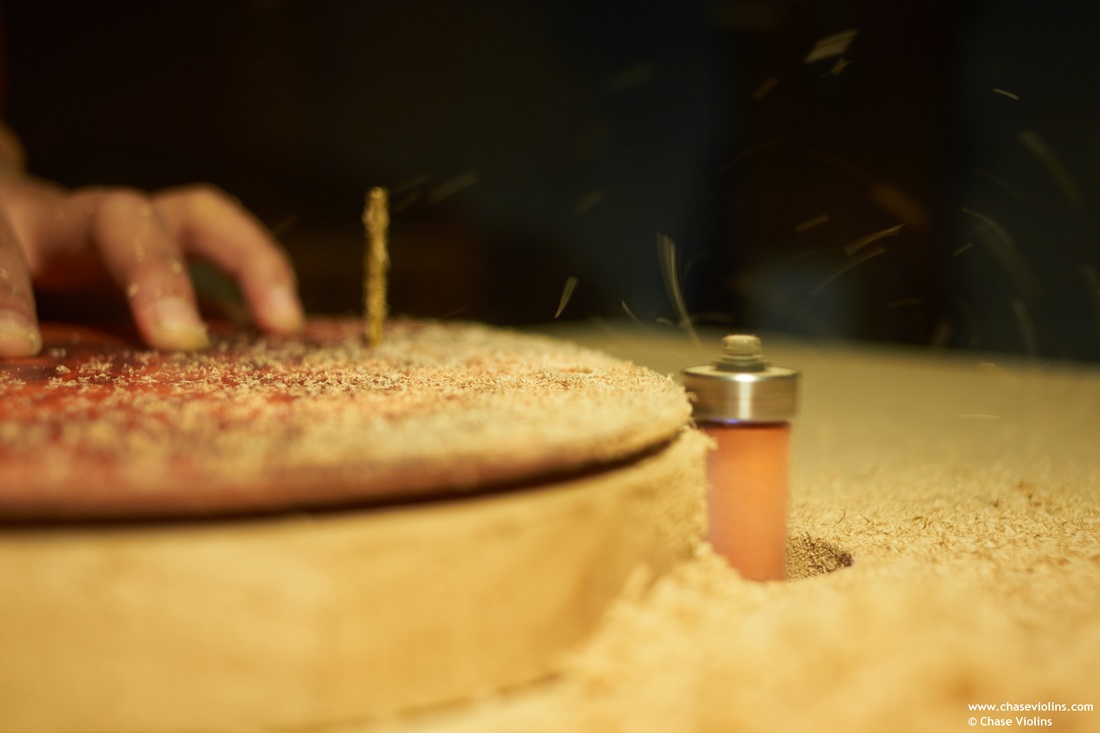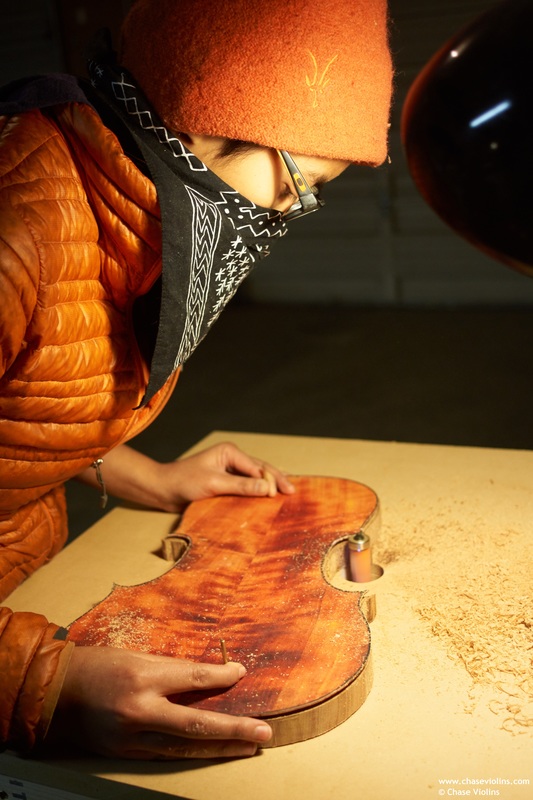After the ribs are finished, we saw out a rough outline of the instrument. From there we lower the edge to within one millimeter of its final height.
Then, the overall height of the arch is determined and arching is roughed out. For me, this is where the viola starts to take its form. It may still be far from its final shape, but the concepts of the arching are now well defined.
Once the edge is set, holes are drilled into the plates and dowels fit to the holes. These serve the same function as the holes drilled into the template and mold.
Now that the plates can be placed consistently, a special marking tool is used to mark the outline of the instrument.
Using a combination of knives and this very small plane, the final outline is made.
Shaping the outline is one of the great joys in violin making. I am always surprised how quickly this goes. I spend quite a long time imagining the shape and then before I know it, the job is done!
